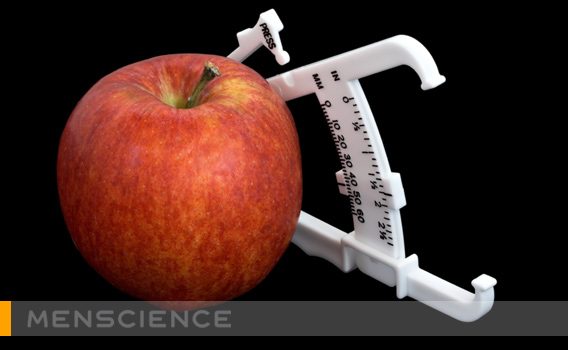The first thing you should do before starting any diet or fitness plan is figuring out where you currently stand. Taking your measurements and writing them down can help you keep track of your journey to a healthier, better-looking you. Although the scale can give us a good idea of our current weight, you can take things a step further with a lesser-known tool: fat calipers.
What are fat calipers?
Fat calipers are a weight-measurement tool that measures your body fat percentage (the amount of fat on your body compared to lean body mass). Some are plastic and others are metal – they loosely resemble crab pincers. Calipers pinch the skin and measure skin folds at various sites on your body to determine the amount of body fat you have.
What exactly is body fat?
Quite simply, body fat is loose connective tissue on your body. There are two types of fat you should be concerned about: visceral and subcutaneous. Visceral fat is mainly found in your abdomen and around your vital organs; it’s this type of fat that has been linked to all sorts of health problems like heart disease and diabetes. Subcutaneous fat, on the other hand, is the fat found closer to your skin – the fat you can pinch. Although it’s unsightly, subcutaneous fat isn’t as strongly linked to health complications.
Why is measuring body fat so important?
Measuring body fat as opposed to your total weight is important because regular scales provide an incomplete representation of how much fat you have. For example, a bodybuilder can weigh upwards of 250 pounds but have a body fat percentage at or under 10%, which is relatively lean. Similarly, you can be the average weight for your height, but your body fat percentage can be 20%+, which is unhealthy. Using fat calipers helps settle that discrepancy by helping you determine how much subcutaneous fat you have.
Editor’s Note – Want the latest men’s skincare news and exclusive MenScience offers? Sign up for our newsletters!
How do I use fat calipers?
1. Use calipers first thing in the morning. For the most accurate reading, use them before eating breakfast. That way, your stomach is empty and you minimize the risk of an inaccurate reading.
2. Measure the following three sites on your body: chest, abdomen and thigh. There are several different locations on your body that can be used to figure out your measurements (bicep, tricep, shoulder blade, etc.), but these three sites are what many experts consider the gold standard.
3. To measure your chest, pinch your skin halfway between your right armpit and nipple. Use your thumb and forefinger to pinch the skin diagonally.
4. Use the calipers to pinch the skin half way between the bottom of the skin fold and the top of the skin fold. You may need to hold the calipers at an angle to get the measurement since your fingers may be in the way.
5. Record the measurement. It’s important to keep record since you’ll be measuring again and using the average.
6. Measure your abdomen. Pinch a vertical fold about 2 centimeters to the right of your belly button. Repeat steps 4 and 5.
7. Measure your thigh. Pinch a vertical fold halfway between your knee and the top of your thigh. Repeat steps 4 and 5.
8. Measure each site two more times. Don’t measure them consecutively (i.e. don’t measure your thigh and then immediately measure it again). Instead, run through all three sites again to allow your skin to regroup between measurements.
9. Calculate the average measurement of each site. Add the three measurements for your chest and divide by three. Do the same for the other two sites.
10. Add the averages and use the chart that came with the calipers to determine your body fat percentage.
What’s considered a healthy body fat percentage?
For active males, anywhere from 6%-17% is considered healthy. However, 18%-24% is acceptable, although not ideal. The list below was compiled by the American Council on Exercise (ACE).
Essential fat (the minimum your body can function at): 2%-5%
Professional Athletes: 6%-13%
Generally Fit: 14%-17%
Average: 18%-24%
Obese: 25%+
How to achieve a healthy body fat percentage
It’s impossible to target visceral or subcutaneous fat. To reduce either, you have to burn fat overall. Here are some easy tips to help you lose weight.
1. Eat a balanced diet. All the exercise in the world won’t help you if all you eat is garbage. The key to a healthy body is in the kitchen. Need help starting a diet plan? Check out our men’s boot camp to help you improve your eating habits.
2. Work out regularly. Whether you’re a cardio nut or a weight-lifting guru, both types of exercise can help you burn calories and tone your physique. Working out regularly (3-5 times a week) not only helps you look good, but also improves your overall health.
3. Take your supplements. Supplements are not a replacement for a healthy diet, but they can help you achieve your goals faster. No matter what your goals – weight loss, muscle gain, a healthier heart – there’s a supplement for that. Check out “How to Include a Supplement in Your Diet” for tips on finding the right supplement for you.









